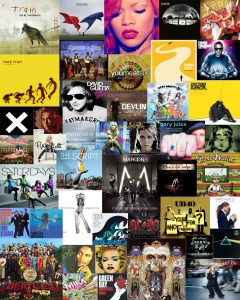The D.C. hardcore scene kind of sucks. But it didn’t always.
Back in the late ’70s and throughout the ’80s, D.C. was the place to be if you were a hardcore punk band. Bands like Bad Brains and Minor Threat, known for their fast and aggressive music paired with politically charged lyricism, found fame in our nation’s capital. The booming music scene also birthed beloved venues like the Black Cat and the 9:30 Club to host the District’s increasingly popular punk bands. But today, it seems like D.C.-grown hardcore bands are harder to come by and like most alternative bands don’t even stop in the District. And for fans in D.C., shows an hour or more away in Maryland or Virginia are a trek.
Growing up conveniently close to New York City (NYC), I was spoiled by the plethora of small venues that allowed local and alternative artists to thrive. Since coming to D.C., however, I noticed many of the bands I love don’t love to play here.
Instead, they take pit stops in Baltimore on a weeknight before heading off to New York, where the “real” fans are. Or, even worse, they don’t drop by the DMV at all. One of my favorite emo/math rock bands, Macseal, is the opener on a tour that is completely ignoring D.C., traveling straight from Philadelphia to New York, much to my dismay.
So, what happened?
For starters, punk died.
Although many believe “punk’s not dead,” in some ways, it is—at least compared to what it used to be in the late ’80s. When the culture of hardcore is counterculture, it’s no wonder it struggles to thrive. The D.C. scene, where post-punk bands like Fugazi were able to find a welcoming community, doesn’t support alternative musicians like it used to. Instead, the increasingly gentrified and expensive city has been a deterrent for hopeful alternative artists trying to make a living. It’s already hard enough for small hardcore bands to break into the mainstream—if ever—but now it just seems like an impossibility in D.C.
Another blow to the hardcore scene was COVID-19. Many smaller venues that were willing to support the punk scene can now barely support themselves. Music venues were one of the first businesses to close due to COVID-19 and the last to reopen. The Black Cat would have closed permanently if not for a patchwork of federal grants during the pandemic. Other music clubs like Twins Jazz, which was a haven for the District’s jazz community for over 30 years, or popular music halls like U Street, were not so lucky. They, along with other venues, closed.
The #SaveDCVenues movement, launched by local venue owners, employees, musicians, activists, and non-profit leaders, campaigned to garner public support for emergency legislation to aid D.C.’s music venues. In a 2021 letter to Mayor Bowser and the D.C. Council signed by 600 local figures and organizations, the movement outlined the D.C. Music Venue Relief Act, which would give monthly monetary support to venues and other businesses that offer live music, starting from October 2020 through May 2021. If not for campaigns like theirs, much of the independent music scene would have been completely wiped out in the pandemic.
The D.C. hardcore community is now small, but it certainly still exists. Bands like Drivel and PsyOp are authentically D.C.-based punk artists. Small venues like the Pie Shop regularly host alternative groups. In many ways, punk in D.C. hasn’t been dying, but evolving.
Even the Georgetown bubble isn’t completely devoid of music. Many student bands like Kicking Cans or The Ordeal have found their time to shine on campus in recent years, for either benefit concerts or the ever-popular Battle of the Bands. But the student bands are isolated from the rest of the scene. Oftentimes the only venues student musicians play outside of Georgetown are events like Georgetown Cabaret, a concert put on by Georgetown undergraduate students at the now closed U Street Music Hall.
Much like Georgetown bands, D.C. alternative artists are isolated from the national hardcore scene. Compared to its peak in the ’80s, D.C.’s community is now too small to attract artists from powerhouse cities, like NYC and Philadelphia. Instead, artists go to Baltimore, where the culture is alive and well.
When moving to a new city, I was hoping to find a lively scene like the one I loved back home. It was a significant reason why I applied to urban universities. The hardcore scene here, however, is not what I expected. Much like NYC, D.C. is expensive. But unlike NYC, a hotspot for any artist of any genre, D.C. boasts less of the underground culture.
So where is the culture these bands are looking for? Not here. Small, local artists in D.C. can barely afford to be small, local artists in D.C. Even larger bands are not willing to spend the high costs of making stops here—it’s not worth it. In comparison to cities like NYC, D.C. has limited options of alternative venues, most of which are too small, and a weaker community of hardcore fans.
So does the scene really suck, or am I just not looking hard enough? D.C. punk may be different, but hardcore bands are definitely still based here. Yet, since the original scene died, alternative artists now neglect D.C. from their tours. The alternative scene here is just not what it should be, especially for a metropolis like the District. What’s a big city without vibrant and diverse music? Personally, I think a new movement is needed: #DontIgnoreDCHardcore.





